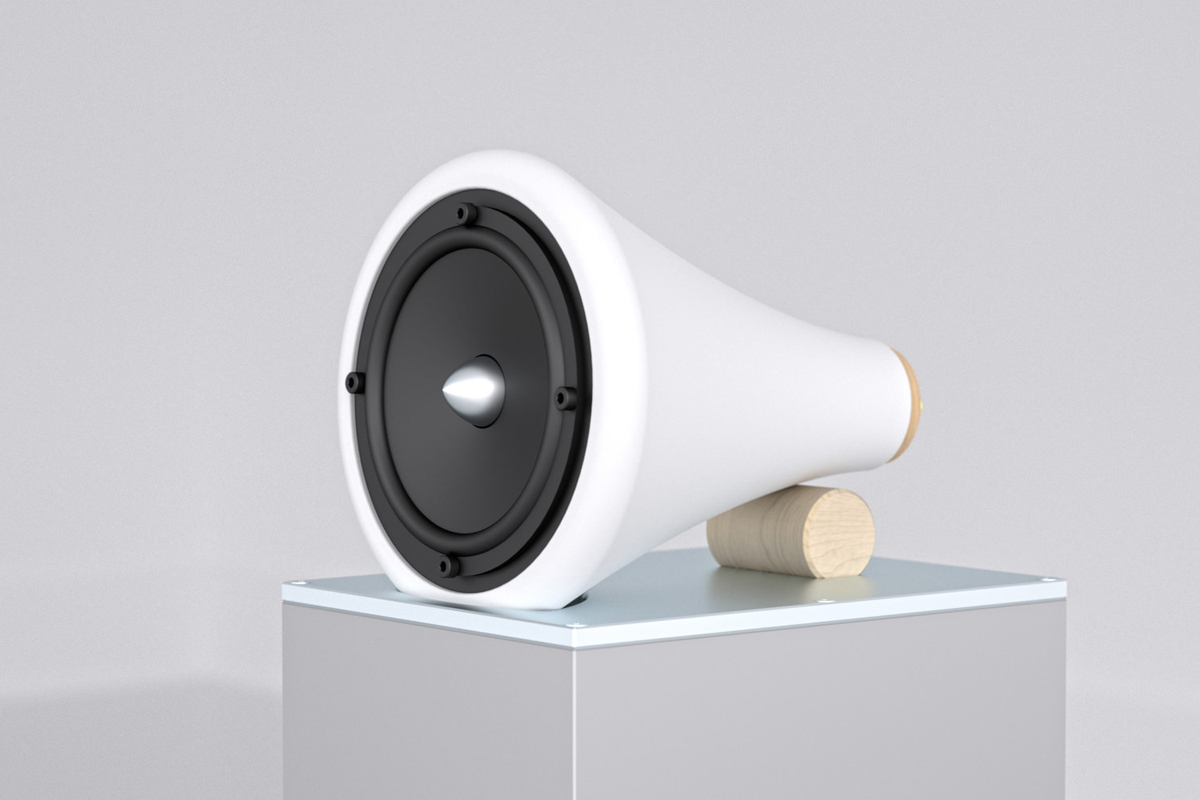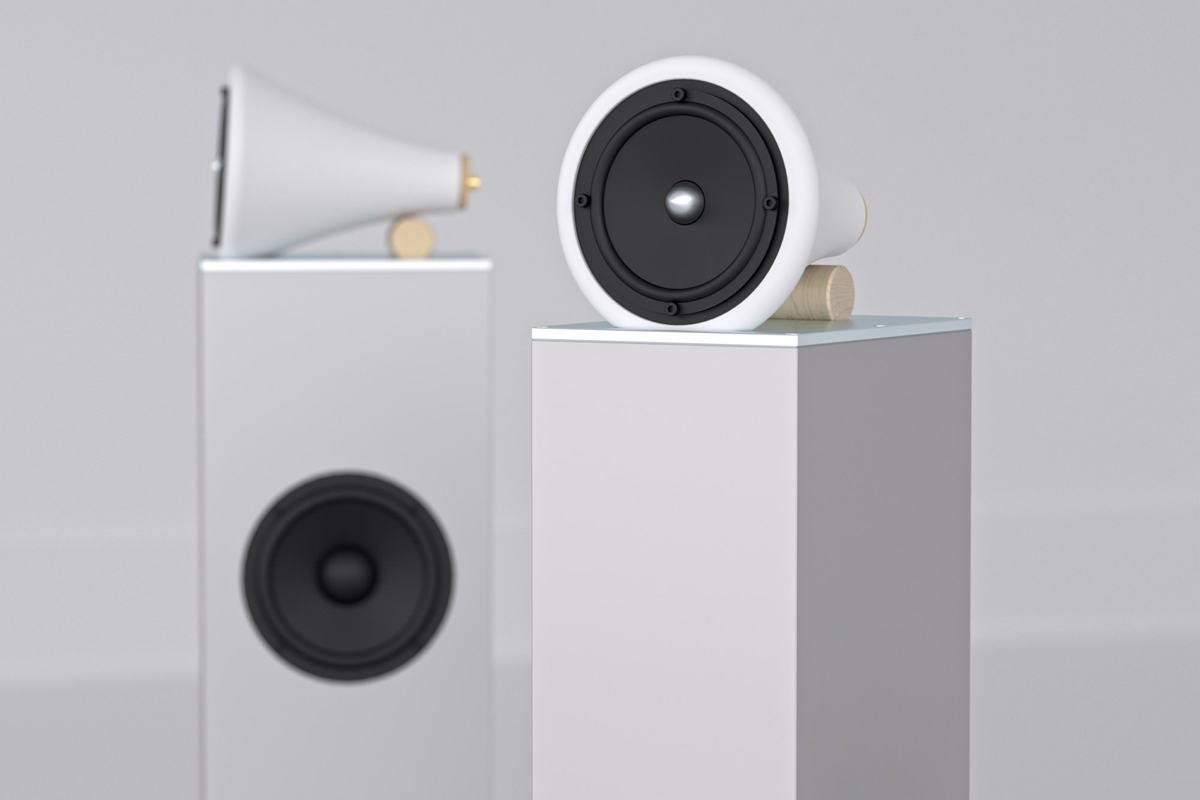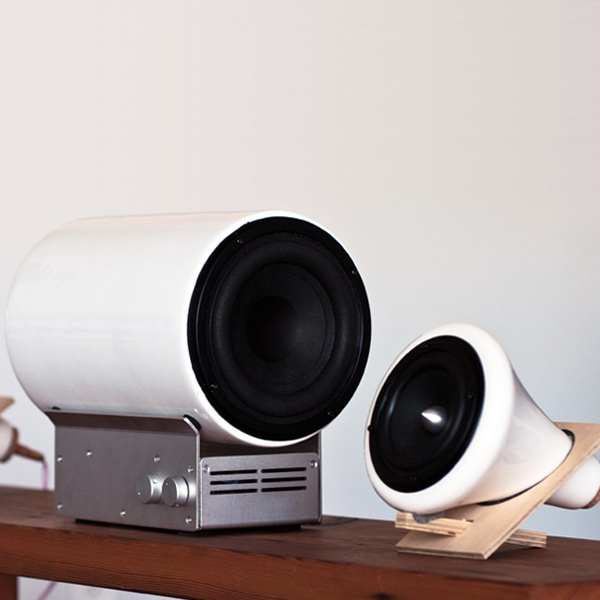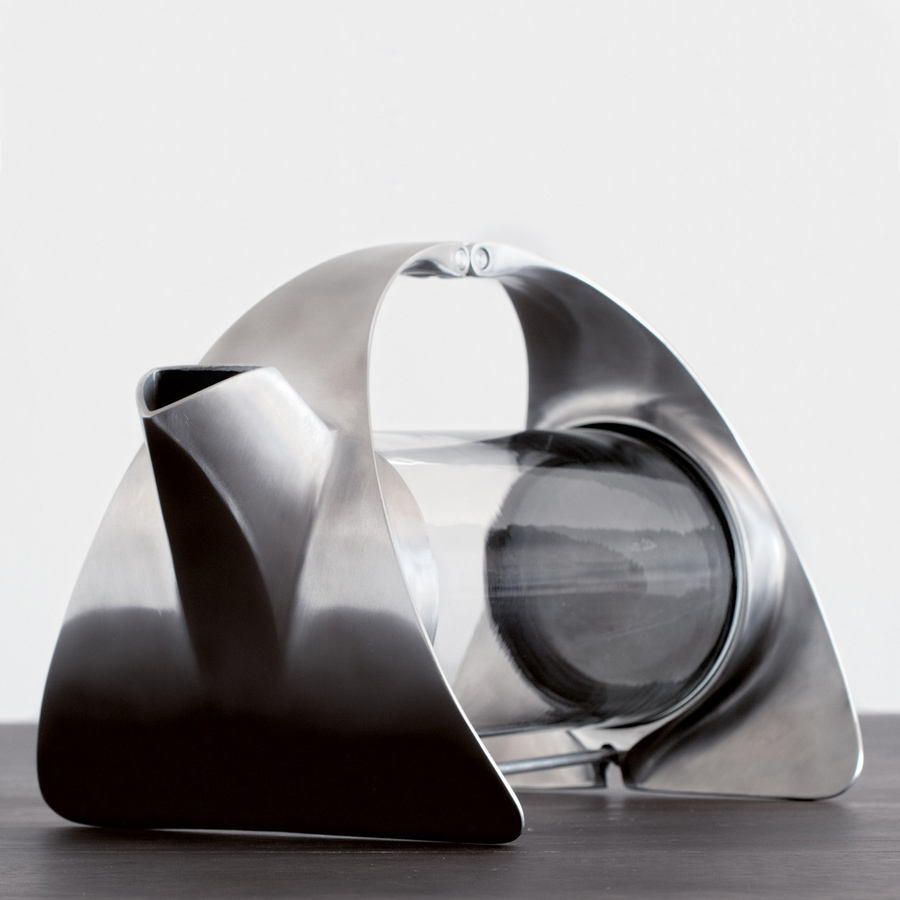Interview: Joey Roth on His Ceramic Towers
Combining rich sound quality with sculptural, grand design


Industrial designer Joey Roth has been thinking about his just-released, minimal ceramic towers for some time—even before his subwoofer, he tells us, which was over three years ago. The final execution is a grand, sculptural creation measuring 6 x 8 x 26 inches that elevates his ceramic speakers beautifully without sacrificing sound quality. It’s not an easy feat: combining technology with design, form with function. Since crafting his first ceramic speakers back in 2009, Roth has (of course) learned a lot about audio and speaker design. It’s no surprise then, that a natural problem-solver and designer would continue to improve and evolve his speaker systems and we spoke with Roth about his process of intense research, leaping over hurdles and what he ultimately wants customers to get from his creations.

You’ve been working on this design for a long time, can you tell us a little about the years leading up to the products’ execution?
My process is a cycle of inspiration and execution that’s always running. I started thinking about the Ceramic Towers even before launching the Subwoofer; I knew that the Subwoofer could be better, even though it was an honest expression of my skill as a designer and engineer at the time. I explored a few different forms that would liberate the Ceramic Speakers from their plywood stands while pushing bass extension down to 40 hz. I found the best intersection of aesthetic presence and sound quality in the tall aluminum design that takes advantage of standing waves to increase bass extension.
Since 2009 you must have learned a huge amount about sound quality and the technical side of designing speakers.
I’ve learned and continue to learn so much about speaker design. Of the three basic elements in the audio chain—source, amplifier, speakers—speakers are the least “solved,” which makes them the most interesting to work on.
I was exploring how speakers could be optimized for time domain performance rather than frequency domain performance while I was developing the Ceramic Towers. Frequency means the range of low to high tones that the speaker can play at a given volume without distortion, and is usually how speakers are understood. Time refers the speaker’s attack, decay (transients) and coherence. In other words, a speaker whose tweeter plays the snap of the drummer’s stick striking the drumhead at exactly the same time as the woofer plays the drum’s fundamental tone has good time alignment. If it can go from playing the drum hit to a guitar’s wail or singer’s voice instantly, without ringing, it has good transient response. This is difficult to achieve, since reproducing a high frequency requires a very different transducer movement than producing a low frequency. Although the difference between good and bad time alignment/ transient response is measured in milliseconds, it’s the difference between speakers sounding like speakers and sounding like a live performance.

The new design is quite grand, was that something you set out to do from the beginning?
I wanted to emphasize the porcelain, maple and aluminum’s contrasting materiality in a simple and direct way. I chose the most primitive forms (rectangle and cylinder) to similarly emphasize the Ceramic Speaker’s organic form. At the same time, a speaker is a vessel for music, which is determined by the user. It needs to get out of the way and frame, rather than dominate, the listening experience.
No matter how much you learn and research, there are always hurdles in the design process, were there a few in particular with the towers?
Manufacturing the speaker I had in mind, which has a small number of design gestures that each need to be precisely executed, was a major hurdle. A former client introduced me to a machine shop about 40 minutes outside Portland, Oregon, run by two brothers who restore old Volvos and do amazing metal work. These brothers became my manufacturing partners, and they make each Ceramic Tower using a combination of automated machine tools and handwork.
It was also challenging to design a speaker that would gently blend with the Ceramic Speakers at the high end of its passband, go down at least two octaves from there, and maintain time coherence.

Was there there a specific mood you hoped to convey with this new design?
I want customers to see the Ceramic Towers as objects that will subtly elevate both their music libraries and listening spaces. I designed them to be sculptural while fully embracing their identity as speakers, using the most appropriate materials and fewest design gestures necessary.
Is there a specific song you love listening to on the speakers?
The whole album Choose Your Weapon by Hiatus Kaiyote is my main reference material. It’s one of my favorite albums just from a listening and mood perspective, and it will test the capabilities of a speaker system.
Joey Roth’s ceramic towers are available online for $2350 per pair, and come with all necessary cables.
Images courtesy of Joey Roth












